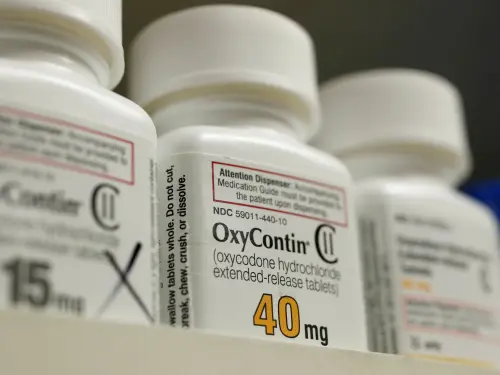Bankrupt drugmaker Purdue Pharma submitted a revised bankruptcy plan on Tuesday in New York, marking a significant stride toward finalizing a proposed opioid settlement totaling at least $7.4 billion following legal setbacks in the U.S. Supreme Court the previous year.
The payments are intended to settle numerous lawsuits alleging that Purdue's pain medication OxyContin fueled a nationwide opioid addiction crisis. The headline figure was previously released by Purdue and the Sackler family, the company's affluent owners.
The newly filed bankruptcy plan in White Plains, New York, delineates additional specifics on how the funds will be distributed among states, local authorities, and individuals affected by the crisis.
Purdue anticipates broad creditor backing for the deal, assuming full participation of all creditors. The company plans to commence vote solicitation and opt-in decisions from creditors in May, eventually seeking final approval from a U.S. bankruptcy court judge.
The new bankruptcy plan emerged nine months after the Supreme Court discarded an earlier settlement proposal that would have granted the Sacklers broad civil immunity from opioid lawsuits.
Purdue's Chairman, Steve Miller, expressed relief after months of rigorous negotiations have brought the company closer to fulfilling an agreement that will provide much-needed financial support to communities grappling with the repercussions of opioid addiction.
Following the Supreme Court's ruling last year, Purdue's latest plan offers creditors the choice to opt into the settlement for compensation. Creditors who opt out retain the right to pursue lawsuits against the Sacklers, who have vowed to vigorously defend themselves in court.
The Sacklers are contributing between $6.5 billion and $7 billion to the new settlement, which represents a $1 billion increase from the rejected deal from the previous year.
Purdue pledges $900 million from its own resources and commits to various non-financial concessions, including transitioning into a public benefit corporation focused on producing medications to combat opioid use disorder and reverse overdoses.
Similar to its predecessor, the new plan aims to ensure that state and local governments utilize their settlement funds to address the adverse effects of the opioid crisis.
The plan sets aside approximately $850 million for individuals affected by the opioid crisis, encompassing those who were prescribed OxyContin and developed dependencies, as well as infants born with withdrawal symptoms due to prenatal exposure to opioid drugs.
